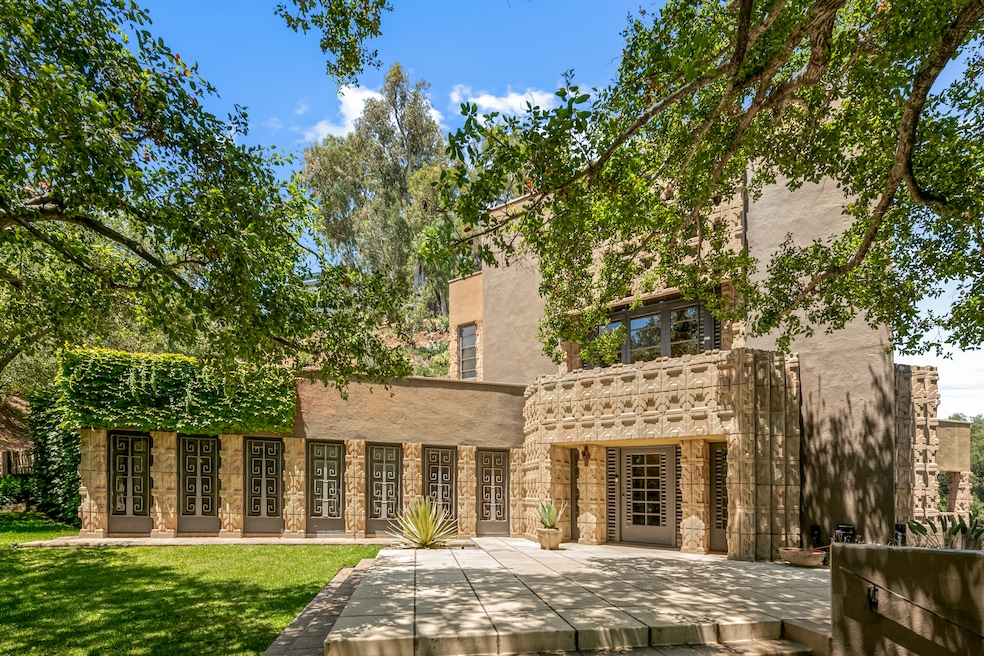When Brian Courville thinks about the home at 2535 E. Chevy Chase Drive in Glendale, California, he likes to imagine what neighbors thought when the house was built in 1926.
“Their eyes probably popped out of their heads,” the Compass agent told Homes.com in an interview.
“The term we like to use sounds silly now,” Courville added, “but we call it modern. This was a modern house.”

Indeed, the concrete and metal exterior doesn’t quite fit the bill for what’s considered a modern house today, but when it was built 100 years ago, it was among the first of its kind. More than that, the home's interior is far from its original state and could use some TLC.
It’s known as The Derby House, and it was built by Lloyd Wright, son of renowned modern architect Frank Lloyd Wright. The residence is among the earliest examples of the concrete textile block construction that eventually became a hallmark of Frank Lloyd Wright’s work.

Now, the more than 3,200-square-foot property is on the market for nearly $2.5 million. Courville holds the listing.
“I’ve done a few open houses now and I’ve had some people come by and say, ‘I’ve been driving by this house for years and I’ve always been fascinated by this, and I’ve wanted to see the interior of this house,’” Courville said.
The home was inspired by California and Meso-America
When the house was first built, Wright took inspiration from the California environment and Meso-American culture, according to Courville.
“Some of the steelwork on the exterior is in the pattern of the local agave plants,” he said. “Some of the interior paint when he first did it was painted gold to mimic the California sun.”

While some of those features — like the exterior concrete blocks and the original wrought iron railings — are still intact, a look inside the home is more indicative of the nearly 100-year-old property’s age.
Photos show missing walls and floors in some parts of the house. Some rooms have exposed beams and lighting.
Restoring a 100-year-old house to its former glory
Restoration isn’t uncommon for homes from the 20th century, especially those built in the Wrights’ concrete block style. Take The Ennis House, another father-son Wright project, for example. The home was the “last and largest” of Frank Lloyd Wright’s textile block houses, according to the LA Conservancy.
It was built in 1940, and by 2005, it ranked among America’s most endangered historic places due to deferred maintenance, the conservancy said. The home required a complete restoration.
The Derby House is in a similar predicament, so the next buyer will likely be tasked with restoring the home.


There are, however, economic incentives from the state to complete such a restoration, according to Courville. The Derby House is a designated historic property under California’s Mills Act, meaning the owner could receive property tax relief for restoring and maintaining the home.
“All the good stuff is still here,” Courville said. “All these architectural details…all the amazing design elements from Lloyd Wright are still here in the house.”
